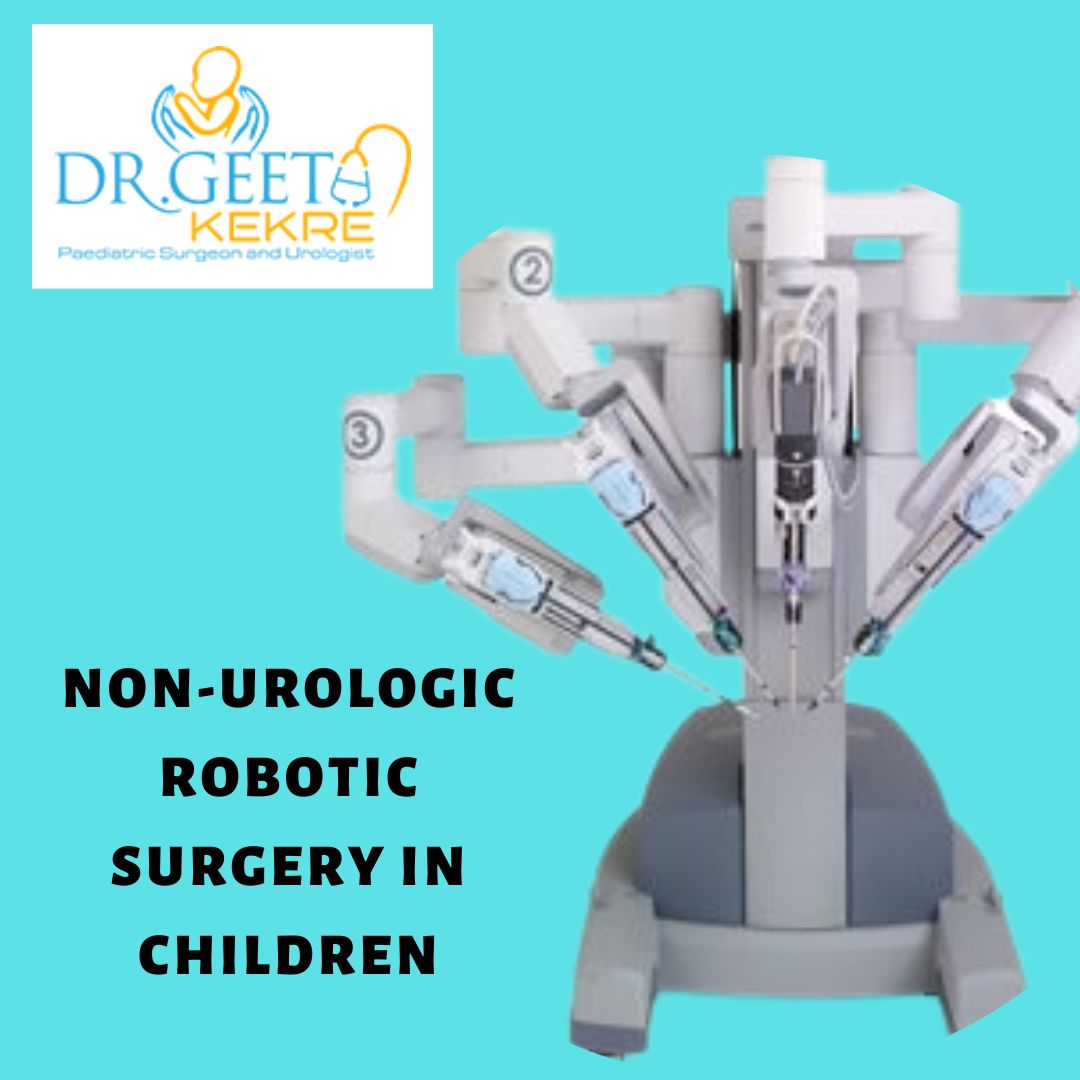The robot has been the latest addition to the pediatric surgeon’s arsenal- and it is a fine one indeed. Following a master-slave concept – with the surgeon being the master and the robot being the slave- robotics has allowed surgeons to perform minimal access to many complex surgeries that would have traditionally required large incisions. In addition to allowing fine, precise, and tremor-free movements even in a restricted space, the robot provides the surgeon with panoramic, 3-dimensional vision enabling them to see exactly what they need to see with adequate magnification. While the robot has become extremely popular for reconstructive urologic procedures especially pyeloplasty and ureteric reimplantation, its use in non-urologic procedures is increasing. Below are some of the more common Benefits of non-urologic Robotic Surgery in Children
Benefits of Non-Urologic Robotic Surgery in Children
Below are some of the more common non-urologic pediatric surgical procedures where the robot offers great benefits.
Choledochal Cyst Excision:
A choledochal cyst is a swelling of the main bile ducts coming out of the liver. These swellings can obstruct the flow of bile, become infected or even give rise to cancers if left untreated. Children usually show symptoms such as pain, a lump in the upper belly, jaundice, or fever. The treatment of choledochal cysts involves surgically removing the affected bile ducts and then reconstructing a passageway for the bile to flow out of the liver and into the intestines. Traditionally, this surgery is done via a large incision in the upper abdomen. However, by using a robot, the entire surgery can be done through 3 or 4 tiny incisions each only a few millimeters in length.
Pull Through for Hirschsprung’s Disease :
Hirschsprung’s disease is a condition in which the terminal part of the large intestine is unable to effectively push the stool out. Children with Hirschsprung’s disease are constipated and unable to have a motion for days on end. Surgery for Hirschsprung’s disease involves removing the defective portion of the large bowel and pulling down the healthy part of the bowel in its place. In older children, this procedure requires an abdominal incision. With the use of the robot, the pull-through can be done with minimal access techniques.
Fundoplication:
Fundoplication is a surgery performed to correct gastroesophageal reflux in children with severe GERD (gastroesophageal reflux disease). Nowadays, fundoplication is almost always performed by laparoscopy. Robot-assisted laparoscopy increases the efficiency by which the surgeon can place sutures on the fundus of the stomach and the esophagus
Liver Resections and Don or Hepatectomy :
Robotics is the only minimal access technique that has shown potential in hepatic resections. It allows for precise dissection and suturing in narrow operative fields and more effective control of bleeding. In living donor liver transplant surgeries, robot-assisted laparoscopy has been used to harvest the graft from the donor while leaving a more aesthetically suitable scar.
About Dr. Geeta Kekre
Dr. Geeta Kekre is a Paediatric Urologist in Pune She is a specialist in pediatric minimal access surgery including robotic surgery as well as reconstructive pediatric urology. After ten years in Mumbai, Dr. Kekre returned to her hometown bringing with her a passion for the surgical care of children and a distinct set of skills in the areas of pediatric minimal access surgery, pediatric endourology, fetal hydronephrosis and antenatal parental counseling, pediatric incontinence, and voiding dysfunction. Dr. Geeta Kekre has a keen interest in clinical academics with over 42 publications in various international journals, including 9 original articles and 32 rare case reports. Her focus is on tailoring surgical therapy to allow her patients to have as active and fun a childhood as possible while delivering the best achievable medical outcomes.


